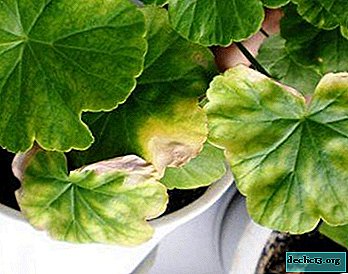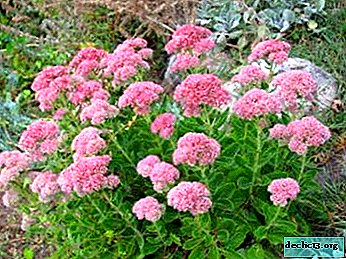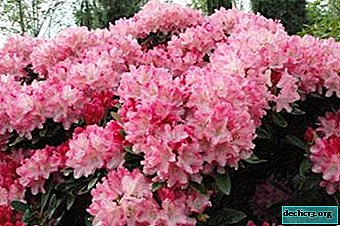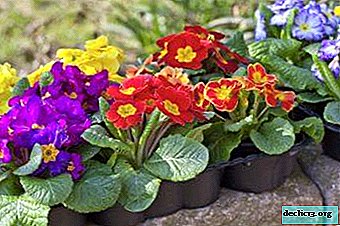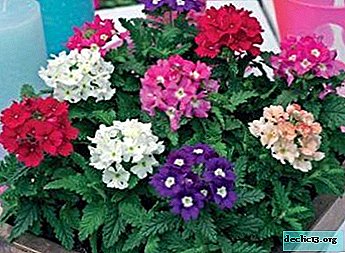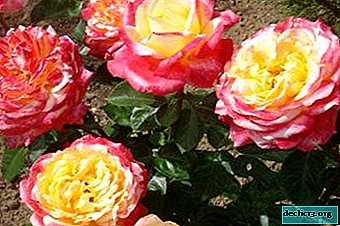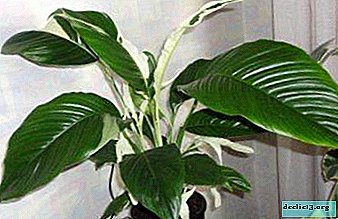Spectacular Cooper hibiscus. Description and photos, care and reproduction at home, diseases and pests

Hibiscus Cooper is an evergreen plant with beautiful variegated leaves. Florists love it for its spectacular appearance and decorative properties.
It is easy to reproduce and undemanding in care. Able to decorate any room.
The article describes the botanical description and proper care at home. It also describes what diseases and pests can affect the plant and how to deal with them.
Botanical Description
Hibiscus Cooper is an ornamental plant of the Malvaceae family. Relate to variegated varieties. The color of the leaves varies depending on the care. If indoors, the lighting is bright, become variegated. The petals are speckled, beige or pink.Indoor grows from 70 cm to 1.5 meters. Another plant is called the Cooper hibiscus, in honor of Daniel Cooper, who brought it to Europe from New Caledonia. In Latin they call "Hibiscus rosa-sinensis var. Cooperi". You can meet him in Sri Lanka, Hawaii, Egypt, China, Indonesia.
Appearance
With proper care, hibiscus lives for a long time. The crown is magnificent, branched. The branches are strong, flexible. Terry flowers or ordinary.
Inflorescences of its bright red or pink hue grow up to 12 cm. After the inflorescences fade, in their place you can see the fruit-boxes, inside them are seeds.
The leaves of the plant are long, covered with different patterns. There are many types of Cooper hibiscus, all of which have a variety of shades of petals and flower shapes.
Photo
Further on the photo you can see what the variegated variety looks like - Cooper hibiscus.



Home Care
- Temperature. Comfortable temperature content of 21-24 degrees. In winter, it should not be lower than 12 degrees.
- Watering. Water the plant abundantly in summer and moderately in winter. Perform the procedure 1 time in 3-4 days. The substrate should always be slightly moistened. Excess moisture after watering is drained from the pallet. The water is used as decanted or filtered. Hibiscus loves high humidity, so it is regularly sprayed.
To clean the leaves of dust periodically in the summer they arrange a shower. It reacts poorly to drafts, so the flowerpot is put away from the window leaves.
- Shine. The flower grows well on the western and eastern windows. When placed on the southern windowsills in the daytime, the pot is shaded from the rays of the sun. In winter, the plant is additionally illuminated with phytolamps. A hibiscus flowerpot is regularly turned to a light source, this contributes to the formation of a uniform crown.
- Priming. The flower prefers to grow on a neutral and light substrate, which passes air and water well. In the store you can buy soil for citrus or flowering plants.
Or to cook it with your own hands, the sheet, turfy soil is mixed with peat and sand, in the same ratio. You can add some charcoal or lime.
- Pruning. To stimulate flowering and form a uniform crown, a pruning procedure is performed. The process consists of the following steps:
- The dried-up shoots that grow parallel to the main branches are cut off.
- Branches growing inside the crown are cut off.
- Pinch the tip of the shoot after flowering.
They also regularly remove dried leaves and buds. During operation, use pruning shears or sharp scissors.
- Top dressing. From April to October, the plant is fertilized once every 3-4 weeks. For feeding, universal mineral complexes for flowering plants are used. When buying, they look that their composition includes the minimum amount of nitrogen, since it negatively affects flowering.
- Pot. The pot becomes small, since a narrow one stimulates flowering, and a large flowerpot stimulates the growth of the bark. Preference is given to containers made of ceramics or wood, but plastic materials are not suitable, since the hibiscus roots overheat in them.
- Transfer. Young specimens are transplanted every year, and adult plants 1 time in 2-4 years. If the hibiscus is too old, then its topsoil is changed. The day before the transplant, the flower is abundantly moistened. The procedure itself consists of the following actions:
- The plant is carefully pulled out of the pot, the roots are checked for damage and rot, and if they are found, they are removed.
- A drainage layer and a little soil are poured into a new pot.
- Hibiscus set in the middle, holding it with his hand, the voids are filled with a substrate and rammed.
After abundantly watered, the first top dressing is carried out after two months.
- Wintering. In the winter season, hibiscus is resting. The temperature in the room is lowered to 14-16 degrees. The pot is rearranged in a more illuminated place, additionally illuminated with phytolamps. Watered sparingly, only to prevent drying out of an earthen coma.
Propagation Features
 Indoor hibiscus is propagated by two methods:
Indoor hibiscus is propagated by two methods:
- The seeds. Before planting, the seeds are treated with a solution that stimulates growth. After swelling, they are planted in a substrate of peat and sand, watered and covered with a film. Contain at a temperature of 23-25 degrees. Spray and ventilate regularly.
After 12-14 days, the first sprouts appear, and with the advent of several leaves, they are dived into separate containers. The first flowering occurs after 3-4 years.
- Cuttings. The apical processes are cut, 5-10 cm long, from the mother plant and planted in a sand mixture. Spray and top with a jar. Every day, air 10-15 minutes.
After 3-4 weeks, roots appear and planted cuttings are transplanted to a permanent place. Flowering occurs in a year.
Diseases and Pests
Cooper's hibiscus is rarely sick, but with the wrong content the following difficulties may appear:
- Leaves turn yellow and fall. This happens with a plant overflow. It is necessary to reconsider the water application regimen.
- The ends of the leaf are curled. Hibiscus lacks nutrition. They make mineral fertilizers.
- The plant completely fades. The room has dry air or insufficient watering. Moisturize and spray more often.
Pests such as spider mites, aphids and scale insects can attack a flower. At their first detection, the leaves are urgently wiped with a damp sponge dipped in a soap or tobacco solution. If the infection is strong, then their destruction use insecticidal drugs.
Similar flowers
- Kitaybeliya. Large white flowers, cup-shaped. Serrated leaves.
- Abutilon. The leaves resemble maple, a bright greenish hue, with white and yellow spots. The flowers are bell-shaped.
- Dwarf Fittonia. Leaves are green, with streaks of white, red or another shade. Gray-yellow flowers.
- Maranta. Shoots erect or creeping. The leaves are green, decorated with various spots.
- Hypesthes. Leaflets are large, green with many white, pink or red spots.
Hibiscus Cooper is an evergreen, ornamental plant, the care of which is not difficult even for a beginner grower. It is enough to choose a suitable place, provide regular watering and top dressing, and then he will live for many years.





